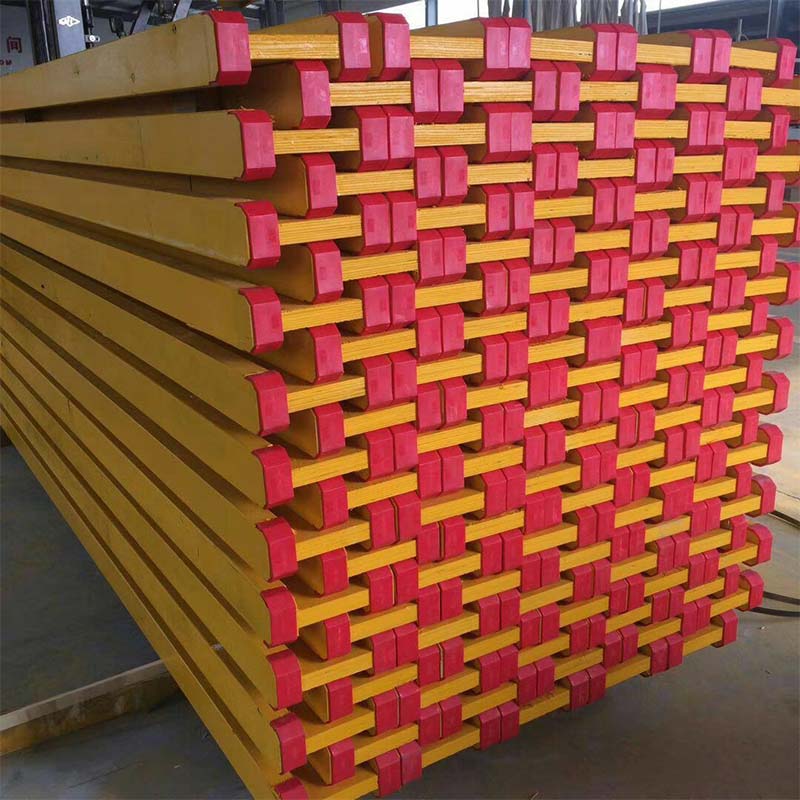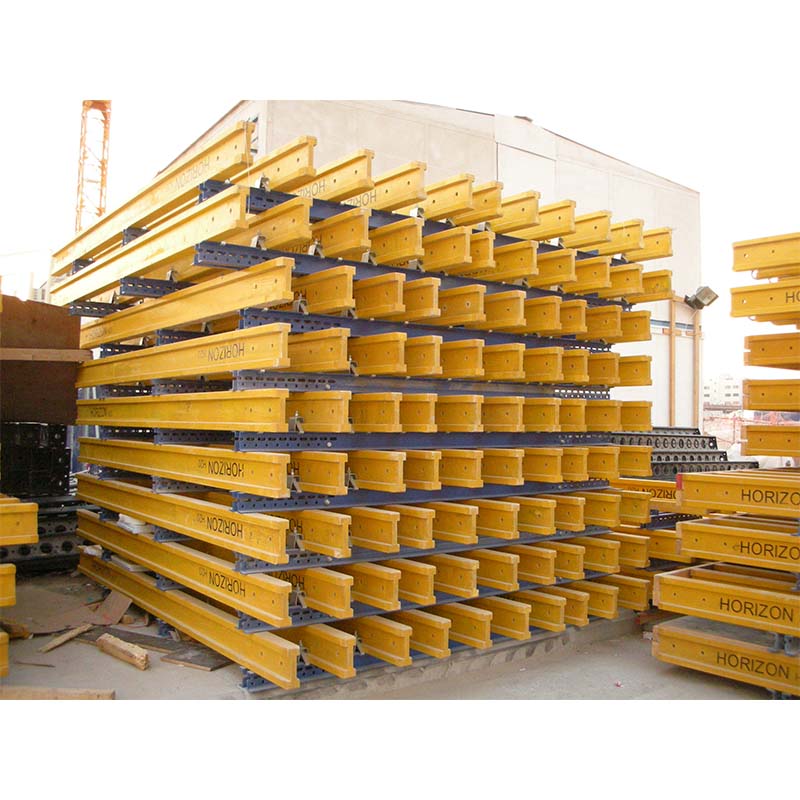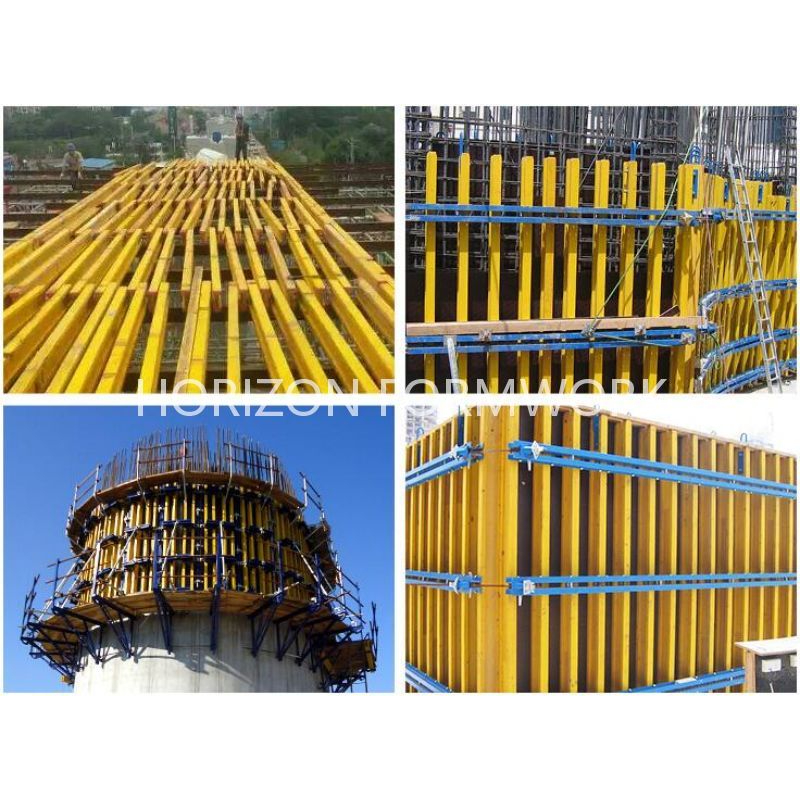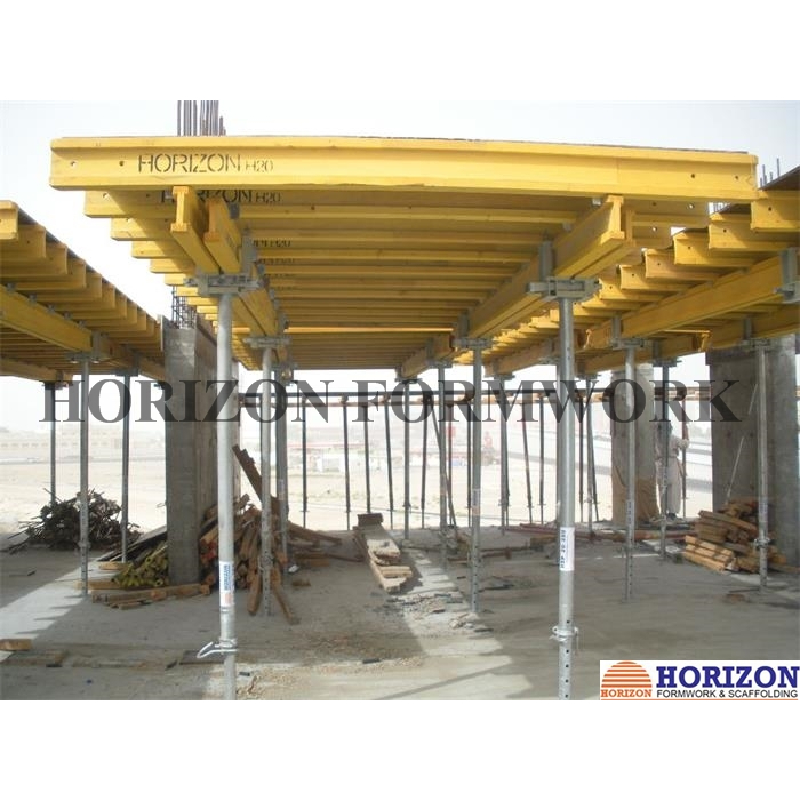ส.ค. . 16, 2025 02:20 Back to list
Timber Beam H20: Premium Formwork & Shuttering Solutions
Precision Engineering in Construction: The Role of Timber Beam H20
In the dynamic and ever-evolving landscape of modern construction, the demand for robust, efficient, and reliable formwork solutions is paramount. As projects grow in complexity and scale, the foundational components supporting concrete structures must exhibit exceptional performance characteristics, ranging from high load-bearing capacity to remarkable reusability and ease of handling. Among the critical innovations in this sector, the timber beam h20 stands out as a cornerstone product, widely recognized for its pivotal role in facilitating efficient and precise concrete pouring. This specialized beam, designed specifically for formwork systems, offers a superior combination of strength, lightweight properties, and economic viability. Its widespread adoption across diverse construction segments, from residential high-rises to sprawling commercial complexes and critical infrastructure, underscores its irreplaceable value. The industry trends clearly indicate a sustained growth in the adoption of engineered wood products due to their sustainable attributes and predictable performance. As a B2B decision-maker or technical professional, understanding the intricate details of this component, from its manufacturing precision to its versatile applications, is crucial for optimizing project timelines, reducing material waste, and enhancing overall structural integrity. This comprehensive overview delves into the technical merits, application insights, and strategic considerations surrounding the procurement and deployment of timber beam H20, ensuring stakeholders are equipped with the knowledge to make informed decisions for their next major construction endeavor.
The Meticulous Manufacturing Process of H20 Timber Beams
The superior performance and extended service life of a high-quality timber beam h20 are direct results of a highly controlled and technologically advanced manufacturing process, setting it apart from conventional timber products. This process begins with the careful selection of raw materials, typically high-grade Nordic spruce or pine, known for their exceptional strength-to-weight ratio and consistent fiber structure. These timber species are precisely kiln-dried to achieve an optimal moisture content, which is critical for preventing warping, cracking, and ensuring dimensional stability throughout the beam's operational lifespan. The core of the beam, often referred to as the web, is typically constructed from high-strength, three-layer solid wood panels or laminated veneer lumber (LVL) engineered for specific shear resistance. The flanges, forming the top and bottom chord of the 'H' profile, are crafted from solid timber, often finger-jointed for maximum length and strength continuity. The assembly involves advanced adhesive technology, using water-resistant glues such as MUF (melamine-urea-formaldehyde) or PRF (phenol-resorcinol-formaldehyde) that guarantee a robust, durable bond capable of withstanding harsh construction environments, including exposure to moisture and concrete alkalinity.
Subsequent stages involve sophisticated CNC (Computer Numerical Control) machining to achieve the precise 'H' profile, ensuring exact dimensions and straightness, which are paramount for accurate formwork assembly and uniform concrete surfaces. Each beam undergoes stringent quality control at various stages, adhering to international standards such as EN 13377 (European standard for timber formwork beams), which dictates specifications for load-bearing capacity, stiffness, and durability. Additionally, compliance with ISO 9001 quality management systems is standard for reputable formwork h20 timber beam manufacturer entities, ensuring consistency and reliability across batches. The final step typically involves applying a water-repellent, often yellow, protective paint to the entire beam surface, enhancing its resistance to moisture absorption, UV radiation, and mechanical damage, thereby significantly extending its reusability and overall service life. This meticulous manufacturing approach not only contributes to the impressive lifespan, often allowing for 20 to 100 reuses depending on site conditions and handling, but also ensures the product’s suitability for demanding applications in industries like civil engineering, petrochemical, metallurgy, and complex water supply and drainage projects, where energy-saving and anti-corrosion properties of the formwork system are indirect but significant benefits due to precise and less wasteful concrete application.

Comprehensive Technical Specifications and Performance Data for H20 Timber Beam
Understanding the detailed technical specifications of the h20 timber beam is essential for structural engineers, project managers, and procurement specialists to accurately design formwork systems and ensure safety and efficiency on site. These beams are engineered to precise dimensions and performance criteria to guarantee reliable load transfer and stability under significant concrete pressures. The standardized 'H' profile, with a height of 200 mm and flange width of 80 mm, is optimized for integration with various modular formwork systems, enabling rapid assembly and dismantling. The web thickness, typically ranging from 27mm to 30mm, crafted from multi-ply or engineered wood panels, provides exceptional shear resistance, critical for handling dynamic loads during concrete pouring and vibration. The selection of materials, specifically high-density spruce or fir for flanges and durable plywood or OSB for the web, contributes to a favorable weight-to-strength ratio, making these beams manageable on site while offering impressive load-bearing capabilities.
Beyond their physical dimensions, the mechanical properties of a quality timber beam h20 are rigorously tested and documented. Key performance indicators include the characteristic bending moment (M_Rd) and characteristic shear force (V_Rd), which typically range around 5.0 kNm and 11.0 kN respectively, demonstrating the beam's capacity to withstand significant bending and shear stresses. The modulus of elasticity (MOE), often exceeding 10,000 N/mm², signifies the beam's stiffness and resistance to deflection, a crucial factor in maintaining the desired shape of concrete structures. Furthermore, the average weight per linear meter, approximately 4.8 to 5.9 kg/m, contributes to the ease of handling and erection, reducing labor costs and improving site safety. Standard lengths typically vary from 1.95 meters to 5.9 meters, with custom lengths often available from a specialized h20 timber beam manufacturer to minimize waste and optimize material usage for specific project requirements. The following table provides a concise overview of typical parameters for high-performance H20 timber beams, offering a quick reference for technical planning and material specification.
| Parameter | Specification |
|---|---|
| Beam Height | 200 mm |
| Flange Width | 80 mm |
| Web Thickness | 27 - 30 mm (multi-ply) |
| Material (Flange) | Solid Spruce/Pine |
| Material (Web) | Plywood or OSB (Oriented Strand Board) |
| Characteristic Bending Moment (MRd) | ~5.0 kNm |
| Characteristic Shear Force (VRd) | ~11.0 kN |
| Modulus of Elasticity (MOE) | >10,000 N/mm² |
| Weight per Meter | ~4.8 - 5.9 kg/m |
| Standard Lengths | 1.95m, 2.45m, 2.65m, 2.90m, 3.30m, 3.60m, 3.90m, 4.50m, 4.90m, 5.90m |
| Adhesive Type | Water-resistant MUF/PRF |
| Protective Coating | Water-repellent paint (typically yellow) |

Versatile Application Scenarios and Distinct Technical Advantages of Timber Beam H20 Formwork
The adaptability and robust performance of timber beam h20 formwork render it indispensable across a wide spectrum of construction applications, forming the backbone of efficient and precise concrete structures. Its primary utility lies in horizontal formwork systems, particularly for the construction of concrete slabs, where the beams serve as primary or secondary supporting elements, effectively transferring the load of wet concrete to vertical shoring. Beyond slab formwork, these beams are equally crucial for vertical applications, forming essential components in wall, column, and beam formwork systems, providing the necessary rigidity and dimensional stability for precise concrete casting. The lightweight nature of the h20 timber beam for shuttering significantly contributes to faster erection and dismantling times, thereby accelerating project schedules and reducing overall labor costs. This ease of handling, combined with their consistent dimensions, allows for quick adjustments and reconfigurations on site, an invaluable asset in dynamic construction environments.
The technical advantages of employing timber beam h20 for slab formwork extend far beyond mere structural support. Their inherent rigidity and minimal deflection under load ensure a consistently flat and true concrete surface, reducing the need for extensive post-pour finishing and contributing to superior aesthetic and structural outcomes. Furthermore, the ability of these beams to be reused multiple times – often achieving between 20 to 100 cycles with proper care and handling – provides a significant economic advantage, lowering the total cost of ownership over the project lifecycle. This reusability also aligns with modern construction's push towards more sustainable practices, minimizing waste and resource consumption. The standardized profile of the timber beam h20 ensures seamless compatibility with various accessory components, including clamps, props, and frame systems, facilitating integrated formwork solutions that enhance safety and operational efficiency. Whether constructing a multi-story building, an expansive bridge deck, or intricate architectural concrete features, the reliability, cost-effectiveness, and operational flexibility offered by these engineered timber beams make them a preferred choice for discerning construction professionals aiming for high-quality, time-efficient project execution.

Selecting the Right Manufacturer: Expertise, Customization, and Trust in H20 Timber Beam Supply
The effectiveness and long-term value derived from h20 timber beam formwork largely depend on selecting a reputable and experienced manufacturer. A distinguished formwork h20 timber beam manufacturer is characterized by a steadfast commitment to material quality, precision engineering, and rigorous adherence to international standards. Key differentiators include the sourcing of premium-grade timber, investment in advanced manufacturing technologies such as CNC processing and automated gluing lines, and a comprehensive quality control system that ensures every beam meets or exceeds industry benchmarks like EN 13377. Furthermore, a highly regarded timber beam formwork manufacturer will demonstrate transparent testing protocols, often providing certification and performance data that substantiate the structural integrity and durability of their products. Manufacturers with extensive service histories and a track record of successful project partnerships, spanning many years in the industry, generally indicate a depth of experience and a reliable supply chain.
When comparing various timber beam formwork manufacturers, it is crucial to assess their capacity for customization and their responsiveness to specific project needs. While standard lengths are widely available, projects often require bespoke solutions to optimize material usage and minimize waste, making the availability of custom lengths a significant advantage offered by leading formwork h20 timber beam suppliers. A manufacturer's ability to provide tailored solutions, coupled with robust logistics and efficient delivery timelines, directly impacts project efficiency and cost-effectiveness. Reputable companies also offer comprehensive technical support, guiding clients through product selection, usage best practices, and post-purchase assistance. For instance, a leading china h20 timber beam for shuttering supplier like Horizon Form, with years of experience and a global supply network, embodies these qualities, ensuring that clients receive not just a product, but a complete solution backed by expertise, reliability, and a commitment to customer satisfaction. Their adherence to ISO standards and extensive product testing provides a solid foundation of trust for B2B partners seeking dependable formwork solutions.

Real-World Impact: Application Cases and Unwavering Client Trust in Timber Beam H20
The true testament to the reliability and efficacy of timber beam h20 solutions lies in their successful deployment across a multitude of challenging and diverse construction projects globally. From high-rise commercial towers in bustling urban centers to critical infrastructure like bridges and tunnels, these engineered beams consistently demonstrate their value, enabling precise concrete pours and accelerating construction timelines. For instance, in a recent large-scale residential development project requiring hundreds of thousands of square meters of slab formwork, the consistent quality and dimensional accuracy of the timber beam h20 formwork supplied by a leading manufacturer ensured minimal concrete wastage and significantly reduced post-pour finishing work, contributing to substantial cost savings and project efficiency. Clients frequently report improved labor productivity due to the lightweight nature and easy handling of the beams, reducing fatigue and enhancing site safety. These tangible benefits are why discerning project managers and procurement specialists continuously opt for proven timber beam formwork supplier entities that prioritize product quality and comprehensive customer support.
Building and maintaining client trust is paramount for any reputable timber beam formwork company. This trust is cultivated through consistent product performance, transparent dealings, and robust after-sales support. Companies that offer clear warranty commitments, detailed product documentation, and responsive customer service, including technical guidance and troubleshooting, tend to foster long-term partnerships. Furthermore, reliable delivery schedules and efficient logistics, particularly for large volume orders, are critical factors that strengthen client confidence. A commitment to quality assurance, backed by international certifications and regular third-party audits, assures clients of the product's adherence to stringent performance benchmarks. Feedback from clients consistently highlights the reusability and durability of quality china timber beam h20 formwork as key factors in their decision-making process, citing reduced overall project costs and environmental benefits. Horizon Form, for example, prides itself on fostering these relationships through a combination of superior product quality, tailored logistical solutions, and unwavering client support, ensuring that every project, regardless of its scale, benefits from reliable and high-performance formwork solutions, reinforcing their position as a trusted partner in the global construction industry.

Frequently Asked Questions (FAQ) about Timber Beam H20
-
Q1: What defines the "H20" in timber beam H20?
The "H20" designation specifically refers to the beam's height, which is 200 millimeters, and its characteristic H-shaped cross-section. This standardized dimension ensures compatibility across various modular formwork systems and accessories, making it a universal component in concrete construction. It signifies a specific performance class within the European standards for formwork beams (EN 13377), indicating its structural properties and load-bearing capacities. The design, including the flange width of 80mm and typical web thickness of 27-30mm, is optimized for high bending moments and shear forces, critical for supporting wet concrete. This standardization greatly simplifies design calculations, material procurement, and on-site assembly for professionals utilizing h20 timber beam solutions.
-
Q2: How many times can a timber beam H20 be reused?
The reusability of a timber beam h20 is one of its significant economic advantages. With proper handling, cleaning, and storage on-site, these beams can typically be reused anywhere from 20 to 100 times. Factors influencing reusability include the quality of the beam's manufacturing (e.g., strong adhesives, protective coatings), the care taken during assembly and dismantling, protection from excessive moisture or UV exposure, and prompt cleaning after each use to remove concrete residues. High-quality beams from a reputable timber beam formwork manufacturer are designed for maximum durability, ensuring a prolonged service life and delivering exceptional value over multiple projects, making them a sustainable choice for formwork applications.
-
Q3: What are the primary advantages of using timber beam H20 over steel beams in formwork?
While steel beams offer robust support, timber beam h20 presents several distinct advantages for formwork applications. Firstly, their significantly lighter weight simplifies handling, reduces reliance on heavy machinery, and enhances worker safety and productivity. Secondly, timber beams are more easily cut to custom lengths on-site, allowing for greater flexibility and waste reduction without requiring specialized cutting equipment like steel. Thirdly, they are generally more cost-effective upfront and offer excellent economic value through high reusability. Unlike steel, timber beams are also less susceptible to permanent deformation under shock loads, often exhibiting more elastic recovery. Furthermore, from an environmental perspective, timber is a renewable resource, contributing to the sustainability profile of projects utilizing china timber beam h20 formwork.
-
Q4: Are there specific maintenance requirements for H20 timber beams?
To maximize the service life and reusability of h20 timber beam, proper maintenance is crucial. After each use, beams should be thoroughly cleaned of any concrete residue. Minor damage, such as small chips or abrasions, can often be repaired with suitable wood fillers and protective paint. Beams should be stored horizontally on a flat, dry surface, ideally under cover, to protect them from direct sunlight, rain, and excessive moisture, which can cause warping or degrade the protective coating. Stacking beams properly, with spacers between layers to allow for air circulation, also helps maintain their dimensional stability. Adhering to these simple maintenance guidelines ensures that the beams retain their structural integrity and appearance, providing reliable support for numerous pours.
Conclusion and Authoritative References
In conclusion, the timber beam H20 represents a critical advancement in contemporary construction formwork technology, offering an unparalleled blend of structural integrity, operational efficiency, and economic viability. Its precise engineering, rigorous manufacturing processes, and adherence to international standards ensure its reliable performance across a myriad of demanding applications, from complex infrastructure projects to high-rise residential and commercial developments. The demonstrated reusability and lightweight characteristics significantly contribute to reduced project timelines, lower labor costs, and enhanced environmental sustainability, making it a preferred choice for discerning B2B decision-makers and technical professionals. As the global construction industry continues its trajectory towards more sustainable and efficient practices, the role of high-quality engineered timber products like the h20 timber beam will only grow in significance. Partnering with a reputable timber beam formwork company that prioritizes product excellence, technical support, and logistical efficiency is paramount to unlocking the full potential of these versatile components and achieving superior project outcomes.
References:
- European Committee for Standardization. (2009). EN 13377: Timber structures - Glued laminated timber and solid timber for structural purposes - Strength classes and determination of characteristic values. Brussels: CEN.
- Forest Products Laboratory. (2010). Wood Handbook – Wood as an Engineering Material (Centennial Edition). General Technical Report FPL–GTR–190. Madison, WI: U.S. Department of Agriculture, Forest Service, Forest Products Laboratory.
- International Organization for Standardization. (2015). ISO 9001: Quality management systems – Requirements. Geneva: ISO.
- Ramirez, J. & Garcia, A. (2018). "Optimization of Timber Formwork Systems for Sustainable Concrete Construction." Journal of Construction Engineering and Management, 144(7), 04018055.
This is the last article
-
Timber Beam H20: Premium Formwork & Shuttering Solutions
NewsAug.16,2025
-
Premium H20 Timber Beam for Formwork & Slab Shuttering
NewsAug.15,2025
-
China Single Sided Wall Formwork: Fast, Flexible Solutions
NewsAug.14,2025
-
Scaffolding Jacks: Durable Screw, U-Head, Swivel & Base Jacks
NewsAug.13,2025
-
Reliable China Single Sided Wall Formwork Manufacturer
NewsAug.12,2025
-
Formwork Wing Nut | Quality Tie Rod & Water Stop Supplier
NewsAug.11,2025